Boudewijn P. F. Lelieveldt
Deep Recursive Embedding for High-Dimensional Data
Oct 31, 2021



Abstract:Embedding high-dimensional data onto a low-dimensional manifold is of both theoretical and practical value. In this paper, we propose to combine deep neural networks (DNN) with mathematics-guided embedding rules for high-dimensional data embedding. We introduce a generic deep embedding network (DEN) framework, which is able to learn a parametric mapping from high-dimensional space to low-dimensional space, guided by well-established objectives such as Kullback-Leibler (KL) divergence minimization. We further propose a recursive strategy, called deep recursive embedding (DRE), to make use of the latent data representations for boosted embedding performance. We exemplify the flexibility of DRE by different architectures and loss functions, and benchmarked our method against the two most popular embedding methods, namely, t-distributed stochastic neighbor embedding (t-SNE) and uniform manifold approximation and projection (UMAP). The proposed DRE method can map out-of-sample data and scale to extremely large datasets. Experiments on a range of public datasets demonstrated improved embedding performance in terms of local and global structure preservation, compared with other state-of-the-art embedding methods.
* arXiv admin note: substantial text overlap with arXiv:2104.05171
An Adaptive Intelligence Algorithm for Undersampled Knee MRI Reconstruction: Application to the 2019 fastMRI Challenge
Apr 15, 2020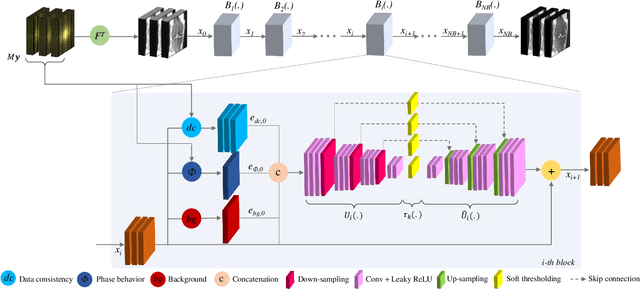
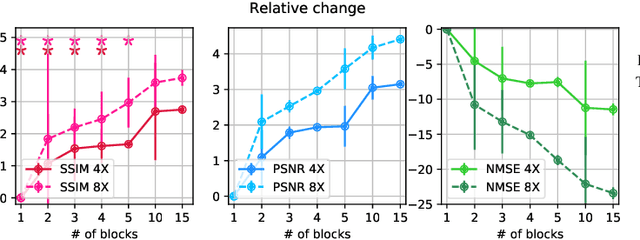
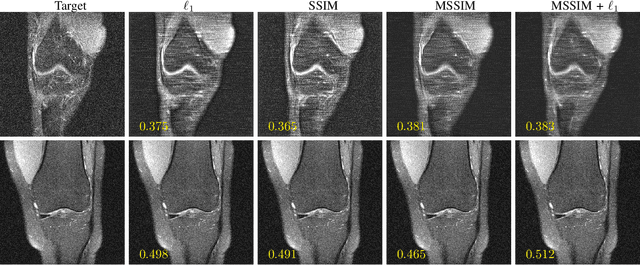

Abstract:Adaptive intelligence aims at empowering machine learning techniques with the additional use of domain knowledge. In this work, we present the application of adaptive intelligence to accelerate MR acquisition. Starting from undersampled k-space data, an iterative learning-based reconstruction scheme inspired by compressed sensing theory is used to reconstruct the images. We adopt deep neural networks to refine and correct prior reconstruction assumptions given the training data. The network was trained and tested on a knee MRI dataset from the 2019 fastMRI challenge organized by Facebook AI Research and NYU Langone Health. All submissions to the challenge were initially ranked based on similarity with a known groundtruth, after which the top 4 submissions were evaluated radiologically. Our method was evaluated by the fastMRI organizers on an independent challenge dataset. It ranked #1, shared #1, and #3 on respectively the 8x accelerated multi-coil, the 4x multi-coil, and the 4x single-coil track. This demonstrates the superior performance and wide applicability of the method.
3D Convolutional Neural Networks Image Registration Based on Efficient Supervised Learning from Artificial Deformations
Aug 27, 2019



Abstract:We propose a supervised nonrigid image registration method, trained using artificial displacement vector fields (DVF), for which we propose and compare three network architectures. The artificial DVFs allow training in a fully supervised and voxel-wise dense manner, but without the cost usually associated with the creation of densely labeled data. We propose a scheme to artificially generate DVFs, and for chest CT registration augment these with simulated respiratory motion. The proposed architectures are embedded in a multi-stage approach, to increase the capture range of the proposed networks in order to more accurately predict larger displacements. The proposed method, RegNet, is evaluated on multiple databases of chest CT scans and achieved a target registration error of 2.32 $\pm$ 5.33 mm and 1.86 $\pm$ 2.12 mm on SPREAD and DIR-Lab-4DCT studies, respectively. The average inference time of RegNet with two stages is about 2.2 s.
Quantitative Error Prediction of Medical Image Registration using Regression Forests
May 18, 2019



Abstract:Predicting registration error can be useful for evaluation of registration procedures, which is important for the adoption of registration techniques in the clinic. In addition, quantitative error prediction can be helpful in improving the registration quality. The task of predicting registration error is demanding due to the lack of a ground truth in medical images. This paper proposes a new automatic method to predict the registration error in a quantitative manner, and is applied to chest CT scans. A random regression forest is utilized to predict the registration error locally. The forest is built with features related to the transformation model and features related to the dissimilarity after registration. The forest is trained and tested using manually annotated corresponding points between pairs of chest CT scans in two experiments: SPREAD (trained and tested on SPREAD) and inter-database (including three databases SPREAD, DIR-Lab-4DCT and DIR-Lab-COPDgene). The results show that the mean absolute errors of regression are 1.07 $\pm$ 1.86 and 1.76 $\pm$ 2.59 mm for the SPREAD and inter-database experiment, respectively. The overall accuracy of classification in three classes (correct, poor and wrong registration) is 90.7% and 75.4%, for SPREAD and inter-database respectively. The good performance of the proposed method enables important applications such as automatic quality control in large-scale image analysis.
Linear tSNE optimization for the Web
May 28, 2018

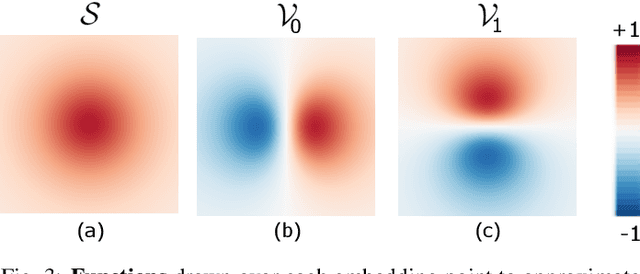

Abstract:The t-distributed Stochastic Neighbor Embedding (tSNE) algorithm has become in recent years one of the most used and insightful techniques for the exploratory data analysis of high-dimensional data. tSNE reveals clusters of high-dimensional data points at different scales while it requires only minimal tuning of its parameters. Despite these advantages, the computational complexity of the algorithm limits its application to relatively small datasets. To address this problem, several evolutions of tSNE have been developed in recent years, mainly focusing on the scalability of the similarity computations between data points. However, these contributions are insufficient to achieve interactive rates when visualizing the evolution of the tSNE embedding for large datasets. In this work, we present a novel approach to the minimization of the tSNE objective function that heavily relies on modern graphics hardware and has linear computational complexity. Our technique does not only beat the state of the art, but can even be executed on the client side in a browser. We propose to approximate the repulsion forces between data points using adaptive-resolution textures that are drawn at every iteration with WebGL. This approximation allows us to reformulate the tSNE minimization problem as a series of tensor operation that are computed with TensorFlow.js, a JavaScript library for scalable tensor computations.
Approximated and User Steerable tSNE for Progressive Visual Analytics
Jun 16, 2016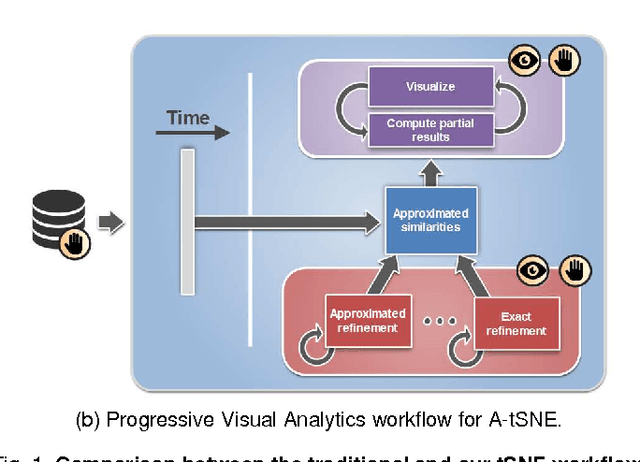

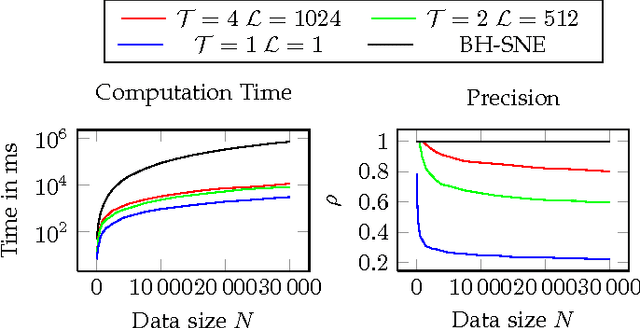
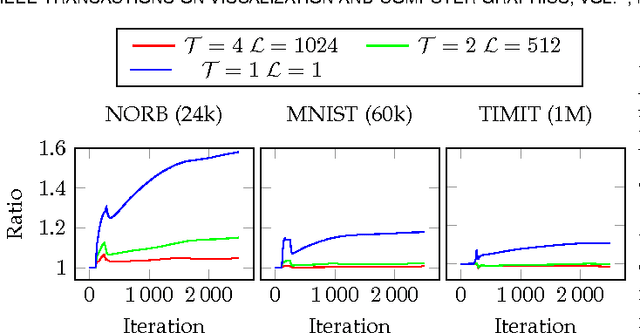
Abstract:Progressive Visual Analytics aims at improving the interactivity in existing analytics techniques by means of visualization as well as interaction with intermediate results. One key method for data analysis is dimensionality reduction, for example, to produce 2D embeddings that can be visualized and analyzed efficiently. t-Distributed Stochastic Neighbor Embedding (tSNE) is a well-suited technique for the visualization of several high-dimensional data. tSNE can create meaningful intermediate results but suffers from a slow initialization that constrains its application in Progressive Visual Analytics. We introduce a controllable tSNE approximation (A-tSNE), which trades off speed and accuracy, to enable interactive data exploration. We offer real-time visualization techniques, including a density-based solution and a Magic Lens to inspect the degree of approximation. With this feedback, the user can decide on local refinements and steer the approximation level during the analysis. We demonstrate our technique with several datasets, in a real-world research scenario and for the real-time analysis of high-dimensional streams to illustrate its effectiveness for interactive data analysis.
 Add to Chrome
Add to Chrome Add to Firefox
Add to Firefox Add to Edge
Add to Edge